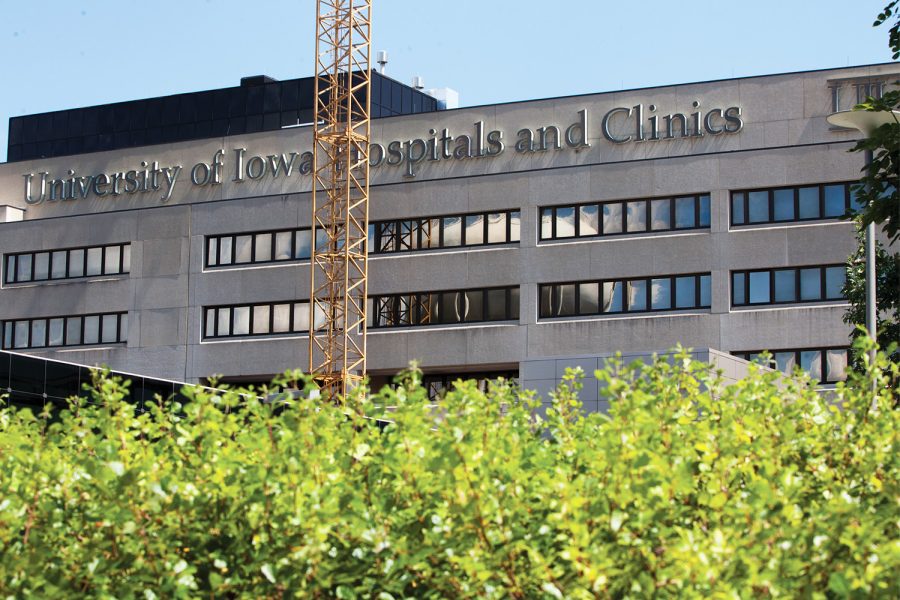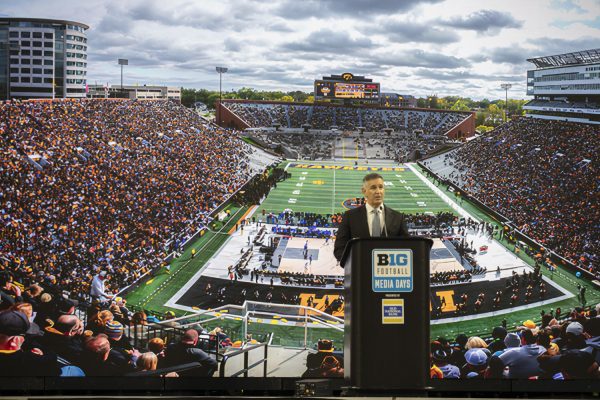UI researchers make advances toward a vaccine for RSV
An intranasal vaccine for RSV is in the early stages of development at the UI, as local hospitals see increases in RSV cases in young children.
University of Iowa Hospitals and Clinics are seen in Iowa City on Aug. 23, 2022.
December 6, 2022
University of Iowa researchers are developing a vaccine for the respiratory syncytial virus as cases of respiratory infections jump at both UI Hospitals and Clinics and Mercy Hospital in Iowa City.
While the vaccine is in the early stages, RSV cases in Iowa and the U.S. are rising. The Centers for Disease Control and Prevention reported an almost 26 percent positivity rate in Iowa as of Nov. 26.
RSV is a common respiratory virus that usually causes symptoms that resemble a cold, including a runny nose, coughing, fevers, sneezing, and more, according to the CDC. The virus can also be serious for infants and older adults.
Padget Skogman, a Mercy Hospital Cedar Rapids pediatric hospitalist, said the virus mainly affects the lungs.
“RSV attacks the airways in the lungs and causes epithelial cells to die,” Skogman said. “The cells clump up in the lungs and make it hard for infants to breathe.”
Skogman said Mercy is seeing an unusual increase of the virus in children this year, which is earlier in the winter season than usual.
RELATED: Local hospitals see uptick in pediatric respiratory illnesses
Derek Zhorne, UI Stead Family Children’s Hospital associate chief medical officer, said UI Hospitals and Clinics is also seeing a large number of virus cases.
“There’s a pretty clear upward trend in the number of positive RSV tests here in the Midwest that started in September,” he said.
Zhorne said he believes COVID-19 changing patterns of immunity could be a cause of the increase.
Now, UI researchers are working to create a vaccine against the virus. Researchers across the U.S. have been working to develop a vaccine for RSV since the 1960s.
Steven Varga, UI professor of microbiology and immunology and a team member researching the vaccine, said the need for a vaccine is also increasing because of the recent rise in RSV cases.
“They have this large population of highly susceptible children that now are getting the first RSV infection that didn’t get it over the last several years,” Varga said. “The big surge and the number of cases just highlights how important this pathogen is and how much it affects.”
He said the first vaccine attempt, a formalin-inactivated vaccine, ended tragically, worsening the effect of the virus.
“It was the first time in the history of the United States that a vaccine had led to increased morbidity, disease, and mortality,” Varga said. “Two of the children tragically died that had received the vaccine from complications that make up RSV.”
Varga said the failure of a 1960s vaccine trial hampered RSV vaccine efforts for almost 60 years.
“Over the last 20 years, however, there’s been a number of vaccines that have been tested that haven’t shown to enhance disease,” Varga said.
Additionally, scientists recently determined how to target a key protein on the surface of the virus called the fusion protein, which Varga said allowed many vaccines to make it to the end stages and be approved.
The vaccine in Varga’s laboratory is a nanoparticle vaccine that targets the fusion protein. He said the vaccine is still in the early stages and has only been tested on animals, but other vaccines will soon be available.
“There are a number of new vaccines that have made it through phase three trials, and there’s likely to be one that gets licensed in the next 12 to 18 months,” Varga said. “Our vaccine is likely to be one of the first to be licensed but as a second-generation vaccine.”
The initial vaccines are anticipated to be available to older adults first, and then in maternal immunization settings. Varga’s vaccine is targeting a different method.
“Our vaccine will be given intranasally to create more specific immunity in the lung,” Varga said. “Current vaccine approaches that are going to seek approval in the next few months are all given intramuscularly, and they create more systemic immunity.”
By vaccinating in the lung tissue, he said it will induce better protection in the lungs than an intramuscular approach. Many steps still need to be taken to develop this approach.
He said his team will follow Food and Drug Administration regulations to move toward testing humans.














